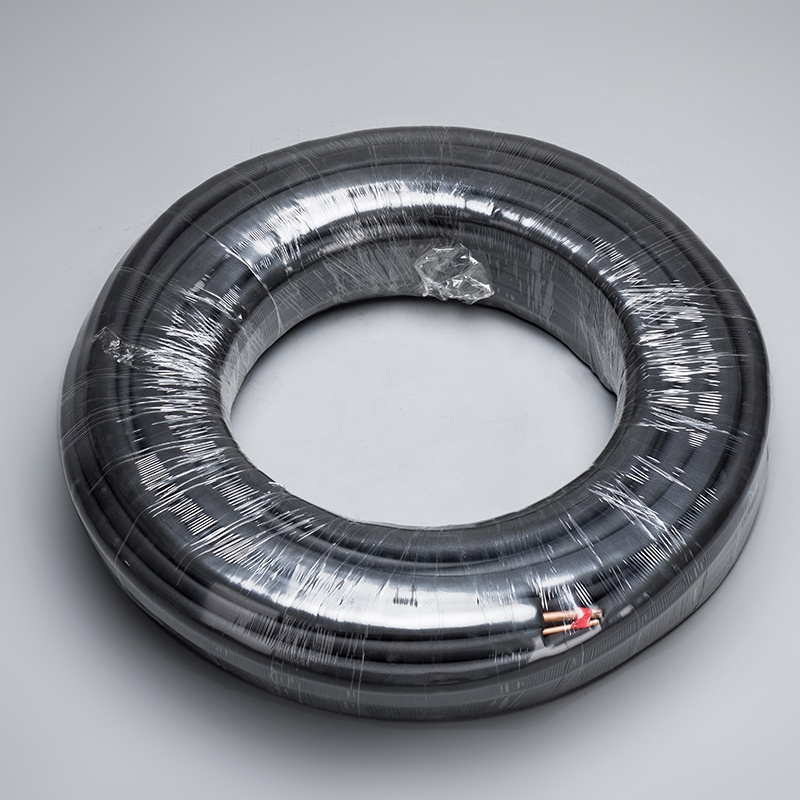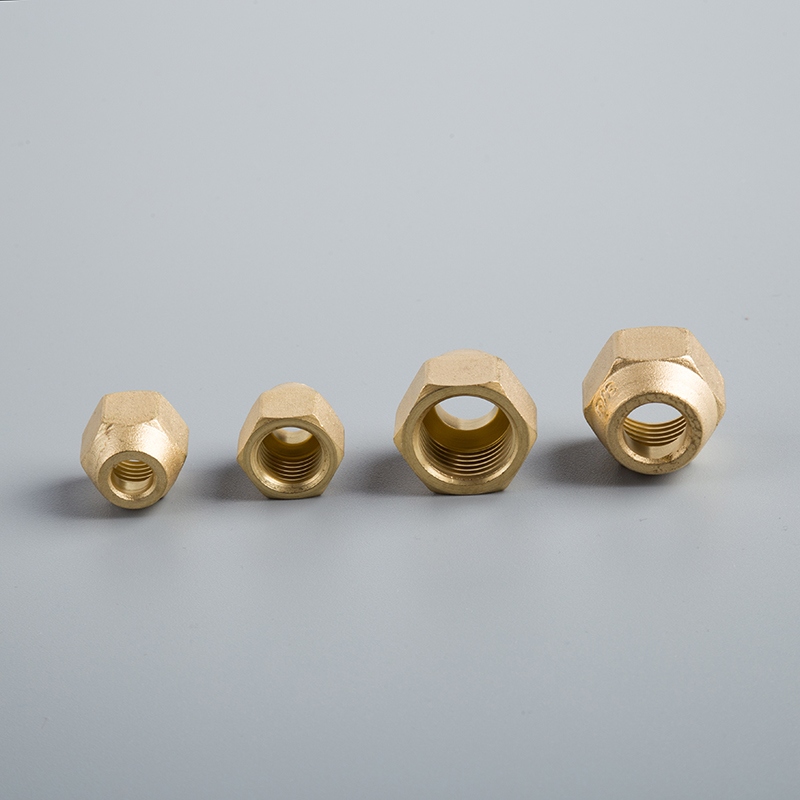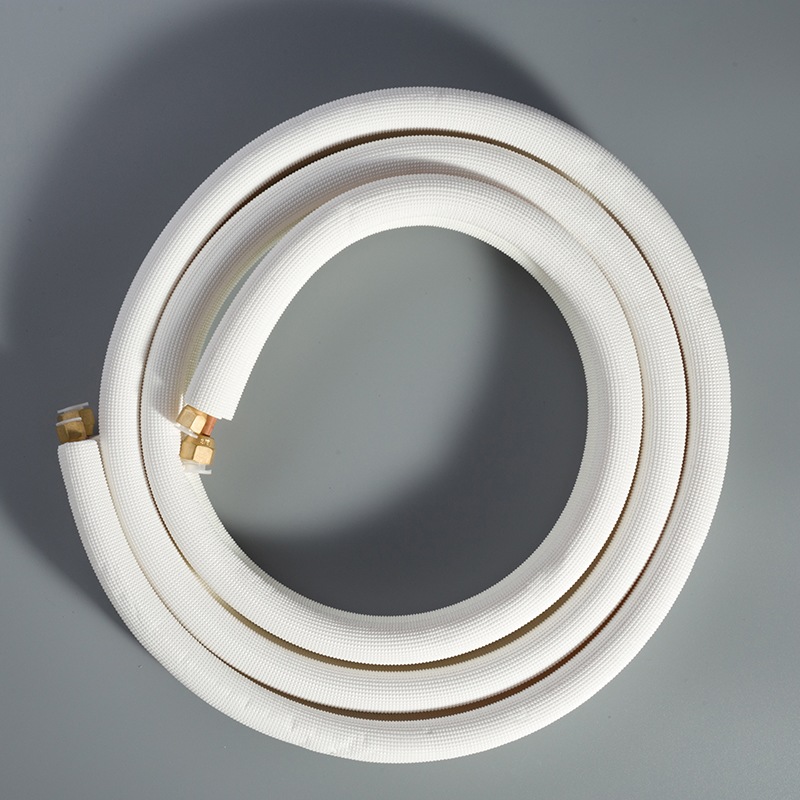Why Aluminum Pipes Are Ideal for Air Conditioning Systems

Benefits of using aluminum pipes in air conditioning systems
Aluminum pipes have emerged as a frontrunner in the realm of HVAC systems, steering a significant shift in material preference. The surge in their utilization is not by happenstance but a calculated response to the escalating demand for energy-efficient solutions. With the construction sector booming and environmental regulations tightening their grip, aluminum pipes have swiftly ascended the ranks. This blog embarks on an enlightening journey to unravel the myriad benefits of using aluminum pipes in air conditioning systems.
Benefits of Aluminum Pipes in Air Conditioning Systems

Cost-Effectiveness
Aluminum pipes offer significant cost-effectiveness advantages in air conditioning systems. When compared to traditional materials like copper, aluminum pipes present lower material costs. This financial benefit allows for more economical HVAC installations without compromising quality. Moreover, the utilization of aluminum pipes results in reduced installation expenses, contributing to overall project savings.
Durability and Longevity
In terms of durability and longevity, aluminum pipes excel in air conditioning applications. Their inherent corrosion resistance ensures prolonged system lifespan by preventing rust and degradation. Additionally, the strength and flexibility of aluminum pipes make them resilient to external pressures, guaranteeing a reliable and long-lasting solution for HVAC systems.
Environmental Impact
The environmental impact of using aluminum pipes in air conditioning systems is noteworthy. The recyclability of aluminum promotes sustainable practices within the HVAC industry, aligning with eco-conscious initiatives. Furthermore, the production and utilization of aluminum pipes result in a lower carbon footprint, reducing environmental harm associated with traditional materials.
Technical Advantages of Aluminum Pipes
Thermal Conductivity
Aluminum pipes boast exceptional thermal conductivity, facilitating efficient heat transfer within air conditioning systems. This attribute enables rapid cooling cycles, optimizing energy consumption and enhancing overall performance. The high thermal conductivity of aluminum pipes ensures that HVAC systems operate at peak efficiency, delivering superior temperature control.
Efficient Heat Transfer
The design of aluminum pipes promotes efficient heat transfer in air conditioning applications. By swiftly dissipating heat, these pipes enable the refrigerant to cool effectively, maintaining ideal temperatures within the system. This efficiency translates to reduced energy consumption and enhanced operational cost-effectiveness for HVAC installations.
Energy Savings
Utilizing aluminum pipes in air conditioning systems leads to substantial energy savings. The seamless heat transfer facilitated by these pipes reduces the workload on cooling mechanisms, resulting in lower energy consumption. This not only benefits operational costs but also aligns with sustainable practices by decreasing overall energy usage.
Weight and Handling
The lightweight nature of aluminum pipes simplifies their transportation and installation in HVAC projects. Their ease of handling streamlines the assembly process, allowing for quicker and more efficient system setups. The weight advantages of aluminum pipes make them a practical choice for both large-scale commercial installations and residential air conditioning projects.
Lightweight Nature
The inherent lightweight nature of aluminum pipes enhances their usability in air conditioning systems. This characteristic eases the burden on installers during setup and maintenance activities, promoting faster project completion times. The lightweight design also reduces structural stress on buildings, making aluminum pipes a reliable choice for long-term HVAC solutions.
Easier Transportation and Installation
Aluminum pipes offer unparalleled convenience in terms of transportation and installation for HVAC applications. Their lightweight construction simplifies logistics, reducing shipping costs and handling complexities. The ease of installation further streamlines project timelines, ensuring efficient deployment of air conditioning systems with minimal disruptions.
Compatibility with Refrigerants
Aluminum pipes exhibit excellent compatibility with modern refrigerants used in advanced HVAC systems. Their adaptability to diverse refrigerant formulations ensures optimal performance across various environmental conditions, guaranteeing consistent cooling efficiency. By future-proofing HVAC systems against evolving refrigerant technologies, aluminum pipes provide a sustainable solution for long-term temperature control needs.
Performance with Modern Refrigerants
The compatibility of aluminum pipes with modern refrigerants is a key advantage in contemporary air conditioning applications. These pipes maintain peak performance levels even with environmentally friendly refrigerant blends, ensuring efficient heat exchange processes within HVAC systems. The adaptability to new refrigerant standards positions aluminum piping as a versatile choice for cutting-edge temperature control solutions.
Future-Proofing HVAC Systems
Incorporating aluminum pipes into HVAC designs offers a strategic approach to future-proofing system capabilities against technological advancements. Their compatibility with emerging refrigerant technologies safeguards against obsolescence, providing longevity and reliability to air conditioning installations. By investing in aluminum piping solutions, stakeholders can ensure that their HVAC systems remain efficient and effective amidst industry innovations.
Addressing Concerns and Misconceptions
Comparison with Copper Pipes
Aluminum pipes stand out when compared to copper pipes in HVAC systems. The performance metrics of aluminum showcase its superiority over copper, offering enhanced efficiency and durability. Unlike copper, aluminum's lower density and specific gravity result in a higher number of parts per pound, making it a cost-effective choice for air conditioning installations. The lightweight nature of aluminum further simplifies handling and installation processes, streamlining HVAC projects efficiently.
Cost-Benefit Analysis
When conducting a cost-benefit analysis between aluminum and copper pipes for air conditioning systems, the advantages of aluminum become evident. Despite copper's higher heat transfer efficiency, aluminum compensates with its cost-effectiveness and environmental sustainability. Aluminum's corrosion resistance, coupled with its recyclability, presents long-term benefits that outweigh the initial differences in material conductivity.
Potential Issues and Solutions
In addressing potential concerns with aluminum pipes in HVAC systems, focus is directed towards ensuring joint and fitting integrity. Proper installation techniques and quality control measures are essential to prevent leaks or structural weaknesses in the piping system. Regular maintenance checks can identify early signs of wear or damage, allowing for timely repairs that uphold the performance and longevity of the air conditioning setup.
Maintenance and Repair Considerations
Maintenance practices play a pivotal role in sustaining the functionality of aluminum pipes within air conditioning systems. Routine inspections for corrosion or blockages help maintain optimal airflow and cooling performance. In case of repairs, swift action to address joint integrity issues or pipe damages is crucial to prevent system inefficiencies or breakdowns. By prioritizing proactive maintenance strategies, users can maximize the lifespan of their HVAC installations.
Scientific and Industry Endorsements
The research studies conducted on aluminum pipes validate their efficacy in air conditioning applications. These studies emphasize the benefits of utilizing aluminum for improved heat transfer efficiency and overall system performance. Furthermore, industry standards and certifications recognize the reliability and quality of aluminum piping solutions, endorsing their use in diverse HVAC projects across commercial and residential sectors.
Industry Standards and Certifications
Industry standards underscore the significance of using high-quality materials like aluminum in HVAC systems to ensure operational excellence. Certifications validate the compliance of aluminum pipes with stringent performance criteria, guaranteeing reliability under varying environmental conditions. By adhering to established industry benchmarks, stakeholders can confidently integrate aluminum piping solutions into their air conditioning designs for sustainable and efficient outcomes.
Case Studies and Real-World Applications

Successful Implementations
Commercial Buildings
John Smith, a renowned HVAC consultant, praises the seamless integration of aluminum pipes in large-scale commercial buildings. He emphasizes the cost-effectiveness and durability of aluminum piping systems, highlighting their contribution to efficient air conditioning solutions.
Aluminum condenser header pipes have become a popular choice in refrigeration and air conditioning systems due to their unique properties and performance characteristics.
Sarah Thompson, an architect specializing in sustainable design, commends the environmental benefits of utilizing aluminum pipes in commercial structures. She notes that the recyclability of aluminum aligns with green building initiatives, promoting eco-friendly practices within the construction industry.
Aluminum has oxidation protection that copper doesn’t have.
Residential Projects
Michael Adams, a homeowner who recently upgraded his HVAC system with aluminum pipes, expresses satisfaction with the enhanced cooling performance. He highlights the lightweight nature of aluminum pipes, making them easy to handle during installation and maintenance activities.
The problem with aluminum coils is if a leak does occur, repairs are virtually impossible.
Emily Rodriguez, an HVAC technician specializing in residential installations, recommends aluminum piping for its long-term reliability. She mentions that despite being relatively new in the HVAC realm, aluminum has showcased promising results in terms of corrosion resistance and efficiency.
With aluminum’s relatively recent introduction in the HVAC realm, the jury is still out on its longevity – we’ll have to wait and see how aluminum holds up in 15 or 20 years.
Highlighting the key benefits and technical advantages of aluminum pipes underscores their superiority in air conditioning systems.
Dispelling common concerns with factual insights solidifies the reliability of aluminum pipes for HVAC applications.
Emphasizing the environmental sustainability and cost-effectiveness of aluminum pipes encourages their adoption in future projects.
For further inquiries or consultations on premium aluminum piping solutions, reach out to TW Metals and AGS for expert guidance and high-quality materials.
See Also
Benefits of Opting for Copper Tubing in Air Conditioning
The Importance of Pure Copper Piping for Effective AC
Key Ways Copper Tubing Transforms Air Conditioning


